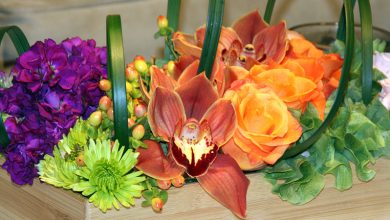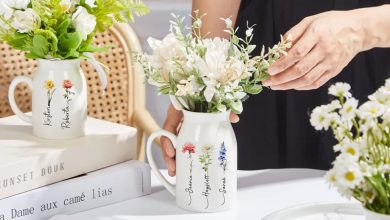How Long Do Artificial Flowers Last? Factors That Affect Their Longevity
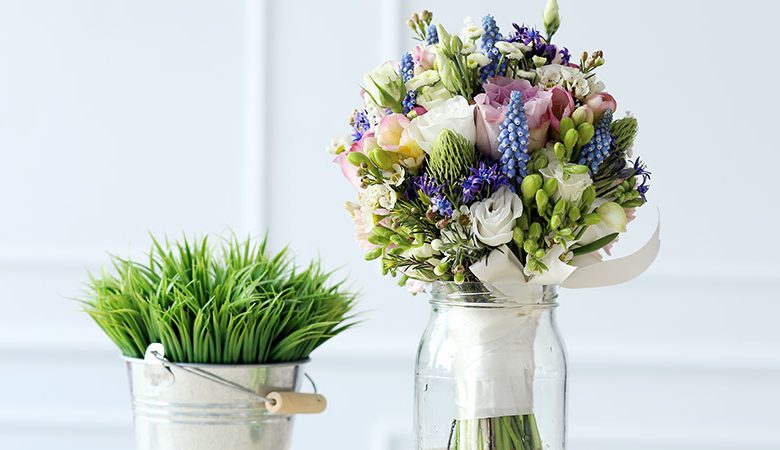
Artificial flowers are a popular choice for home decor, events, and floral arrangements due to their long-lasting beauty and low maintenance. However, the lifespan of artificial flowers can vary depending on several factors. Let’s explore the key factors that affect how long do artificial flowers last and how to maximize their longevity.
Quality of Materials and Construction
The quality of materials used in artificial flowers significantly impacts their lifespan. Here’s how different materials and construction methods affect how long do artificial flowers last:
High-Quality Materials
- Silk: Artificial flowers made from silk are renowned for their lifelike appearance and durability. Silk flowers have a natural sheen and texture that closely mimic real flowers, making them an elegant and long-lasting option for floral arrangements. How long do artificial flowers last? With silk, you can expect them to beautify your space for many years.
- Polyester: Polyester is another popular material for artificial flowers due to its affordability, versatility, and durability. Polyester flowers are resistant to fading, moisture, and insects, making them suitable for indoor and outdoor use. But how long do artificial flowers last? Polyester ones can last a long time too!
- Latex: Artificial flowers made from latex are known for their realistic feel and appearance. Latex flowers are soft to the touch and retain their shape well over time, making them a durable and resilient choice for floral arrangements. So, how long do artificial flowers last if they’re made of latex? They can last a significant amount of time!
Construction Techniques
- Handcrafted: Handcrafted artificial flowers are often made with meticulous attention to detail, resulting in high-quality and lifelike designs. Skilled artisans use traditional techniques such as cutting, shaping, and coloring to create intricate floral arrangements that rival the beauty of real flowers. Wondering how long do artificial flowers last if they’re handcrafted? The answer is, for a very long time!
- Machine-Made: Machine-made artificial flowers are mass-produced using automated processes and techniques. While machine-made flowers may lack the individuality and craftsmanship of handcrafted designs, they offer consistency, affordability, and accessibility to a wider audience. How long do artificial flowers last if they’re machine-made? They can still last a good amount of time!
Key Considerations
- Sturdy Stems: Artificial flowers with sturdy stems and secure attachments are less likely to break or detach over time, ensuring their longevity. How long do artificial flowers last if they have flimsy stems? Not very long!
- Realistic Detailing: Attention to detail, such as realistic coloring, veining, and texture, enhances the visual appeal and authenticity of artificial flowers, contributing to their longevity. The more realistic the details, the longer artificial flowers will last.
- Quality Control: Manufacturers that adhere to strict quality control standards and use high-quality materials are more likely to produce artificial flowers with a longer lifespan. How long do artificial flowers last if they’re made with good quality control? You can expect them to last a much longer time!
By selecting artificial flowers made from high-quality materials and crafted with precision, you can ensure that your floral arrangements retain their beauty and charm for years to come.
Read More: Where to Buy Artificial Flowers in NYC? The Ultimate Guide
Exposure to Sunlight and UV Radiation
How long do artificial flowers last? Exposure to sunlight and UV radiation can have detrimental effects on artificial flowers, causing them to fade, discolor, and deteriorate over time. Here’s how sunlight and UV radiation affect the longevity of artificial flowers:
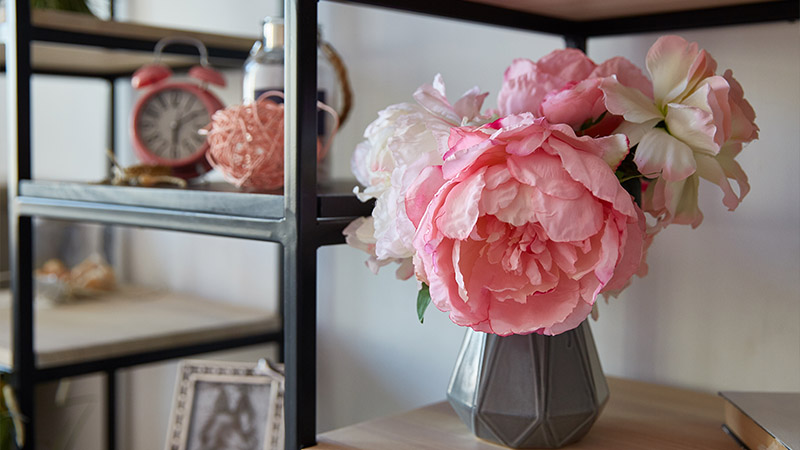
Fading and Discoloration
- UV Damage: Ultraviolet rays in sunlight can penetrate the materials used in artificial flowers, breaking down the chemical bonds and causing colors to fade and lose their vibrancy over time.
- Direct Sunlight: Artificial flowers placed in direct sunlight are particularly susceptible to fading and discoloration, as they are exposed to higher levels of UV radiation for prolonged periods.
Deterioration of Materials
- Weakening of Fibers: UV radiation can weaken the fibers and materials used in artificial flowers, making them more prone to brittleness, cracking, and deterioration.
- Impact on Adhesives: Adhesives used in the construction of artificial flowers may degrade when exposed to UV radiation, leading to loosening of petals, leaves, and other components.
Protection and Prevention
- Indoor Placement: To minimize exposure to sunlight and UV radiation, it’s advisable to place artificial flowers indoors or in shaded areas where they are shielded from direct sunlight.
- UV-Resistant Materials: Choosing artificial flowers made from UV-resistant materials can help mitigate the effects of UV radiation and prolong their lifespan.
- Protective Coatings: Applying a protective coating or sealant to artificial flowers can provide an additional layer of defense against UV damage and enhance their durability.
- Regular Rotation: Rotate artificial flower arrangements regularly to ensure even exposure to light and prevent uneven fading or discoloration.
Wondering how long do artificial flowers last? Keep reading! By taking proactive measures to shield artificial flowers from sunlight and UV radiation, you can ensure they stay vibrant and beautiful for a long time.
Environmental Conditions
Environmental conditions such as temperature, humidity, and air quality can impact how long do artificial flowers last. Here’s how different environmental factors affect the longevity of artificial flowers:
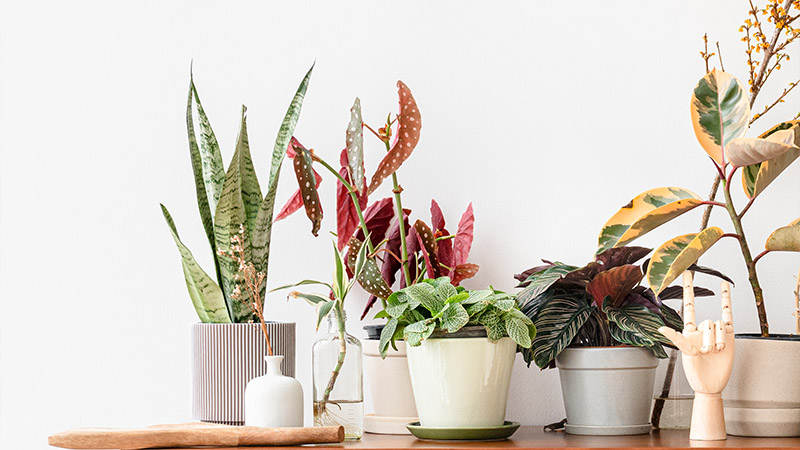
Temperature
- Extreme Heat: High temperatures can cause artificial flowers to become brittle and lose their shape over time. Avoid placing artificial flowers near heat sources such as radiators, heaters, or direct sunlight to prevent heat damage.
- Extreme Cold: Low temperatures can also affect the durability of artificial flowers, causing them to become stiff and prone to cracking. Protect artificial flowers from freezing temperatures by storing them indoors during colder months.
Read More: How to Cut Artificial Flower Stems: Tips and Tricks
Humidity
- High Humidity: High humidity levels can promote the growth of mold and mildew on artificial flowers, leading to discoloration and deterioration. Keep artificial flowers in well-ventilated areas with moderate humidity levels to prevent moisture buildup.
- Low Humidity: Conversely, low humidity levels can cause artificial flowers to become dry and brittle. Consider using a humidifier or misting artificial flowers occasionally to maintain optimal moisture levels.
Air Quality
- Dust and Pollutants: Dust and pollutants in the air can accumulate on artificial flowers, dulling their appearance and compromising their longevity. Regularly dust artificial flowers with a soft brush or cloth to remove any debris and maintain their beauty.
- Indoor Air Quality: Poor indoor air quality can also affect the lifespan of artificial flowers. Keep indoor spaces well-ventilated and free from pollutants such as cigarette smoke, cooking fumes, and aerosol sprays to preserve the quality of artificial flowers.
Key Considerations
- Proper Ventilation: Ensure adequate ventilation in the area where artificial flowers are displayed to prevent moisture buildup and promote air circulation.
- Regular Cleaning: Regularly clean artificial flowers to remove dust, dirt, and pollutants that can accumulate over time and affect their appearance and longevity.
- Storage Conditions: Store artificial flowers in a cool, dry place away from direct sunlight, extreme temperatures, and fluctuations in humidity to maintain their quality and prolong their lifespan.
Artificial flowers can be a beautiful and long-lasting addition to your home decor, but how long do artificial flowers last?
By paying attention to environmental conditions and taking proactive measures to protect artificial flowers from heat, humidity, and air pollutants, you can maximize their longevity and enjoy their beauty for years to come.
Read More: Exploring the Benefits of Artificial Flowers
Tips for Extending How Long Do Artificial Flowers Last
Maintaining and caring for artificial flowers is crucial for maximizing their longevity and preserving their appearance. Here are some key maintenance and care practices to consider, which will help your artificial flowers last even longer:
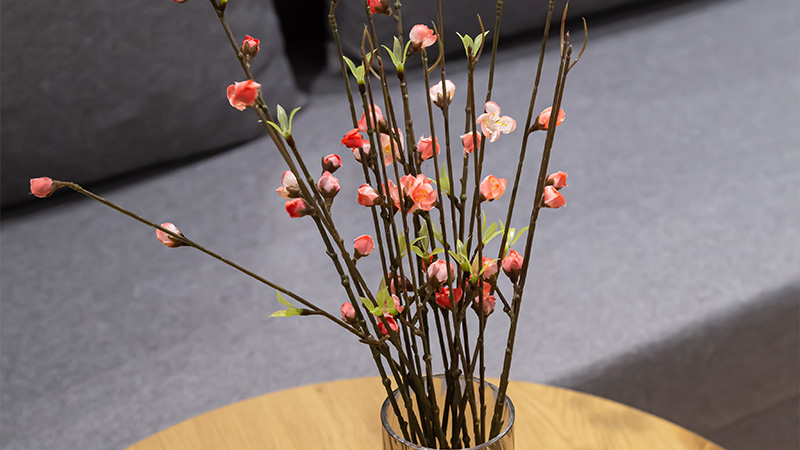
Regular Cleaning
- Dust Removal: Dust and debris can accumulate on artificial flowers over time, dulling their colors and affecting their overall appearance. Gently dust artificial flowers with a soft brush or cloth on a regular basis to remove any surface dirt and maintain their beauty.
- Cleaning Solutions: For more stubborn stains or dirt buildup, consider using a mild cleaning solution or soapy water to gently clean artificial flowers. Be sure to test a small, inconspicuous area first to ensure that the cleaning solution does not damage the materials.
Handling with Care
- Gentle Handling: Handle artificial flowers with care to avoid bending, breaking, or damaging delicate petals and stems. When moving or arranging artificial flowers, support the stems and avoid pulling or twisting them excessively.
- Avoiding Rough Surfaces: Place artificial flowers on smooth surfaces or use protective padding to prevent damage to the stems and petals. Avoid placing artificial flowers on rough or abrasive surfaces that can cause abrasions or tears.
Occasional Repairs
- Petals and Leaves: Inspect artificial flowers periodically for any loose or damaged petals, leaves, or components. If necessary, gently reattach or secure any loose parts using floral tape, adhesive, or hot glue.
- Stem Reinforcement: Strengthen weak or wobbly stems by inserting floral wire or dowels into the stems to provide additional support and stability.
Storage Practices
- Proper Storage: When not in use, store artificial flowers in a cool, dry place away from direct sunlight, extreme temperatures, and humidity. Use breathable storage containers or boxes to prevent dust buildup and maintain the shape of the flowers.
- Avoiding Compression: Avoid storing artificial flowers in tightly packed containers or boxes that can compress or deform the petals and stems. Allow sufficient space between flowers to prevent crushing and maintain their appearance.
Key Considerations
- Frequency of Cleaning: The frequency of cleaning artificial flowers depends on factors such as environmental conditions, usage, and dust accumulation. Generally, aim to clean artificial flowers every few weeks or as needed to keep them looking fresh.
- Inspecting for Damage: Regularly inspect artificial flowers for signs of damage or wear, such as loose petals, fading colors, or bent stems. Address any issues promptly to prevent further deterioration and maintain the longevity of the flowers.
By following these maintenance and care practices, you can prolong the lifespan of artificial flowers and ensure that they continue to enhance your space with their beauty and charm for years to come. But how long do artificial flowers last, exactly? Well, with proper care, they can last a very long time!
Read More: How to Make a Flower Arrangement with Artificial Flowers: A Step-by-Step Guide
Factors Affecting How Long Do Artificial Flowers Last
The way artificial flowers are used and handled can impact their durability and lifespan. Here are some key considerations for usage and handling, keeping in mind how long do artificial flowers last:

Gentle Handling
- Avoid Rough Treatment: Handle artificial flowers with care to prevent damage to delicate petals, leaves, and stems. Avoid pulling, bending, or twisting the flowers excessively, as this can cause them to become misshapen or detached.
- Support Stems: When moving or arranging artificial flowers, support the stems to prevent them from bending or breaking. Use caution when inserting stems into vases or containers to avoid damaging the flowers or the vessel.
Placement Considerations
- High-Traffic Areas: Avoid placing artificial flowers in high-traffic areas where they are likely to be bumped or knocked over frequently. Choose locations where the flowers can be admired without the risk of accidental damage.
- Avoiding Water Exposure: Artificial flowers are not designed to withstand exposure to water, so avoid placing them near sinks, faucets, or areas where they may come into contact with moisture.
Frequency of Rearrangement
- Minimize Handling: Limit the frequency of rearranging artificial flower arrangements to minimize wear and tear on the flowers. Frequent handling can lead to loosening of petals, stems, and other components, reducing the lifespan of the flowers.
- Rotate Occasionally: Periodically rotate artificial flower arrangements to ensure even exposure to light and prevent uneven fading or discoloration.
Display Considerations
- Weight Distribution: When arranging artificial flowers in vases or containers, distribute the weight evenly to prevent the arrangement from becoming top-heavy and tipping over. Use supportive filler materials such as floral foam or pebbles to stabilize the stems.
- Avoiding Direct Contact: Avoid placing artificial flowers directly on surfaces that may scratch or damage the petals or stems. Use protective pads or liners to cushion the bottom of vases or containers and prevent surface damage.
Key Considerations
- Educate Others: If artificial flowers are displayed in public or shared spaces, educate others about the importance of handling them with care to ensure their longevity.
- Monitor Usage: Keep an eye on how artificial flowers are being handled and used in different settings, and make adjustments as needed to minimize wear and tear.
By following these usage and handling guidelines, you can help prolong the lifespan of artificial flowers and maintain their beauty for years to come. In fact, with proper care, high-quality artificial flowers can last for many years – how long do artificial flowers last? We’re talking at least 5-10 years, depending on the environment!
Preserving How Long Do Artificial Flowers Last
Storing artificial flowers properly when not in use is essential for maintaining their appearance and prolonging their lifespan. Here are some key practices to follow:
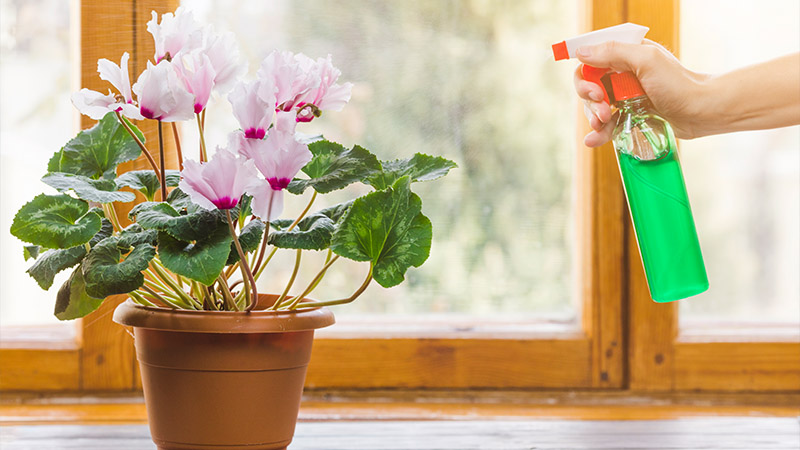
Choosing the Right Container
- Breathable Materials: Store artificial flowers in containers made of breathable materials such as cardboard boxes or fabric bags. Avoid using airtight containers, as they can trap moisture and lead to mold or mildew growth.
- Size Considerations: Select a storage container that allows enough space for the flowers to remain upright and maintain their shape without being compressed or crowded.
Protecting from Dust and Debris
- Covering with Fabric: Place a lightweight fabric cover or cloth over artificial flower arrangements to protect them from dust and debris while in storage. Avoid using plastic covers, as they can trap moisture and promote mold growth.
- Regular Cleaning: Before storing artificial flowers, ensure they are clean and free from dust or dirt buildup. Gently dust the flowers with a soft brush or cloth to remove any surface debris.
Avoiding Direct Sunlight
- Dark Storage Area: Store artificial flowers in a dark or dimly lit area away from direct sunlight, as exposure to UV radiation can cause colors to fade and materials to degrade over time.
- Sunlight Protection: If storing artificial flowers in transparent containers, place them in a dark storage area or cover the containers with opaque material to block out sunlight.
Maintaining Stable Temperature and Humidity
- Consistent Conditions: Choose a storage location with stable temperature and humidity levels to prevent fluctuations that can affect the condition of artificial flowers. Avoid storing flowers in areas prone to extreme temperatures or humidity swings.
- Avoiding Moisture: Keep artificial flowers away from areas with high moisture levels, such as basements or bathrooms, as excess moisture can lead to mold growth and deterioration of materials.
Key Considerations
- Labeling Containers: Label storage containers with the contents and date to easily identify and retrieve specific arrangements when needed.
- Regular Inspection: Periodically inspect stored artificial flowers for any signs of damage, mold, or pest infestation, and address any issues promptly to prevent further deterioration.
By following these storage practices, you can help ensure that your artificial flowers remain in excellent condition and last for many years to come.

In conclusion, the lifespan of artificial flowers depends on various factors such as the quality of materials, exposure to sunlight, environmental conditions, maintenance practices, usage, handling, and storage.
By choosing high-quality artificial flowers, minimizing exposure to sunlight and environmental factors, practicing regular maintenance and care, handling with care, and implementing proper storage practices, you can maximize the longevity of artificial flowers and enjoy their beauty for years to come.



